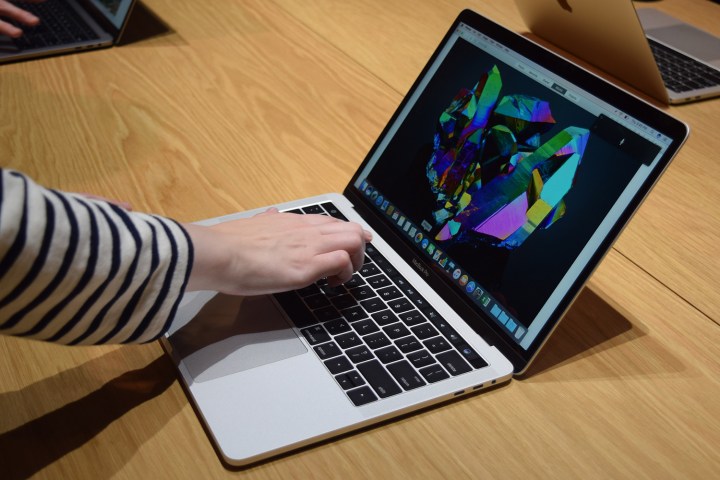Mac users have recently begun to run into an issue that prevents them from using MacOS effectively: When they try to turn their Macs on, they get a message that says, “A critical software update is required for your Mac, but an error was encountered while installing this update,” with an additional note that warns, “Your Mac can’t be used until this update is installed.”
Often, this traps users in a loop of trying to install this “critical software update” that never seems to work, essentially locking down the Mac (not the first time Macs have encountered issues). This is a serious problem, and when it occurs you’re probably looking for a solution as soon as possible. Here are several potential causes behind this malfunction and the fixes that can help you get back to normal.
Your Touch Bar update isn’t working

This problem is often traced back to MacBooks that have the Touch Bar. The Touch Bar acts much like a built-in accessory, and has specific firmware dedicated to its operation. This can cause problems when it’s time to update MacOS, and a separate update needs to be included for the Touch Bar. Sometimes this Touch Bar update is especially sensitive to internet connections or doesn’t respond well to other factors in the update process.
Fortunately, there’s a relatively easy way to see if this is the problem and fix it. First, shut down your MacBook. If you have to, hold down the power button to force a shutdown in case nothing else responds.
Now connect your laptop to a wired network – don’t use Wi-Fi. You want a directly connected network connection, ideally without any restrictions to access. Now boot up your MacBook again and tell it to restart and try to update the software again. If the reboot takes a while, that’s okay. Let it work out any kinks, and see if it can now load MacOS successfully. This is often just the special treatment that the Touch Bar update needs.
A recent app is causing big problems

Kernel panic and update issues can be caused by a recently downloaded app that is working very poorly with MacOS. If you can access MacOS, even for a few minutes, then you can try deleting recently installed apps and see if this fixes the problem.
Sometimes apps can interact with Apple updates and access to Apple servers in weird ways, especially security and network control apps. Hands Off!, for example, has been linked to this critical software update problems. If you recently tried using this app or any similar apps, go in and uninstall them entirely: They just aren’t compatible with the current Apple update process.
You need to reinstall MacOS

Sometimes the update problem points to a more serious flaw in MacOS. The best way to deal with this is to reinstall MacOS entirely. Don’t worry! You don’t have to erase your disk to do this, which means you should be able to keep almost all your saved data (which is unlikely to have caused this particular problem).
When turning your Mac on, simple hold down the “Command” and “R” keys to get started. This will launch the MacOS Utilities window. From here, choose “Reinstall MacOS.” When prompted, choose “Continue” and follow the instructions to complete the reinstallation. This will, of course, take some time, so only start the process when your Mac is connected to a power supply and you have plenty of time when you don’t need to use that computer.
It’s time to take your computer to an Apple Store

If none of these potential solutions are working, it’s time to call up a local Apple Store and arrange to take your Mac in for a closer look from the professionals. Remember, this is a serious issue and the problem could be an internal flaw that you’re just not equipped to deal with. The Apple Store will be able to find out what’s wrong or advise you on how to proceed (such as a full wipe of your computer).
Because a problem like this can lie in the details, it’s often necessary to have an expert take a look and diagnose what’s going on. Make sure you check your schedule and make sure that it’s all right to have your Mac in the shop for a few days or longer!
Editors' Recommendations
- The most common Skype problems and how to fix them
- How to take a screenshot on a Mac
- Laptop buying guide: what to look for in 2024
- The best Mac keyboard shortcuts for 2024
- How to change the default apps on a Mac




